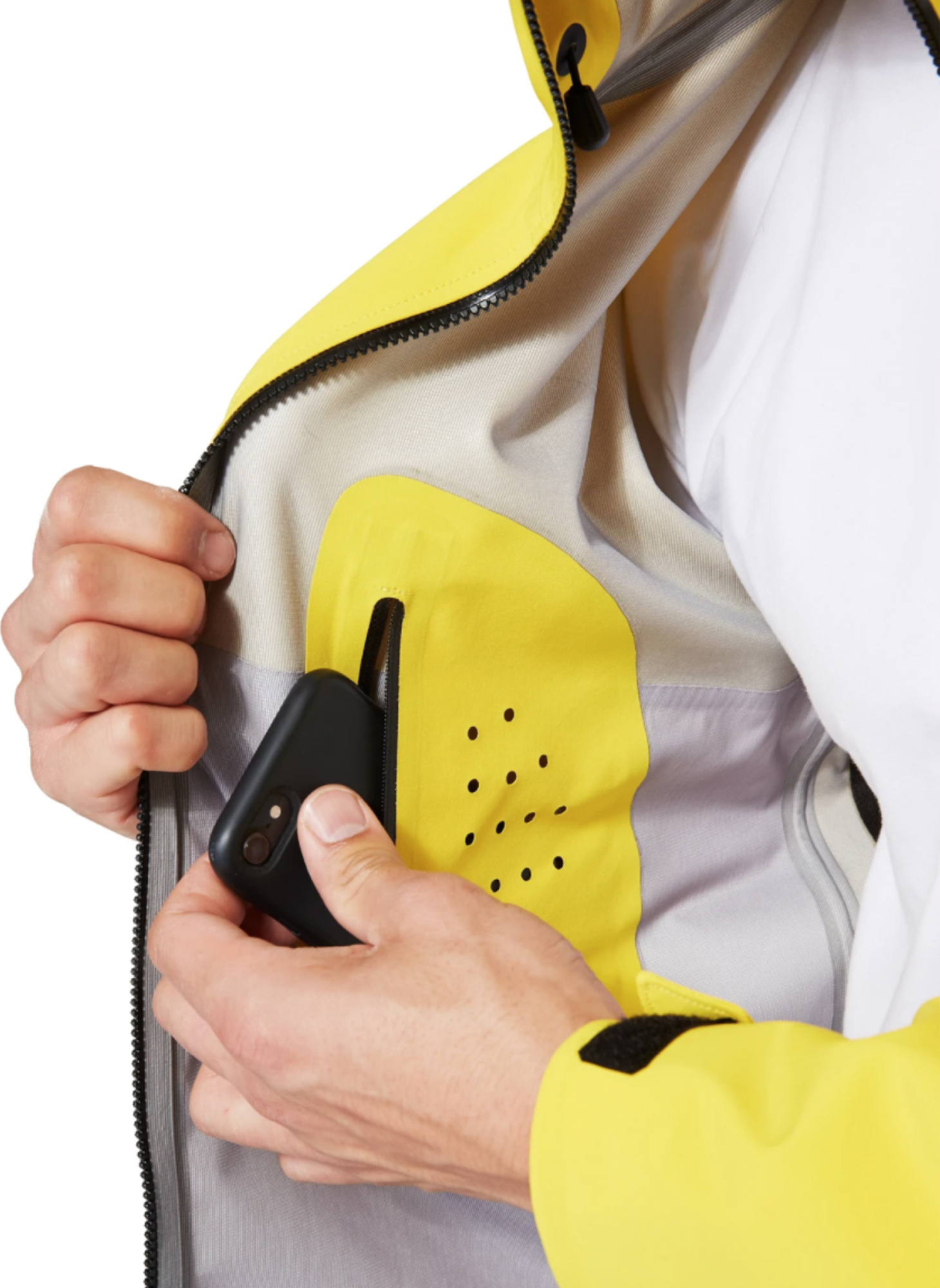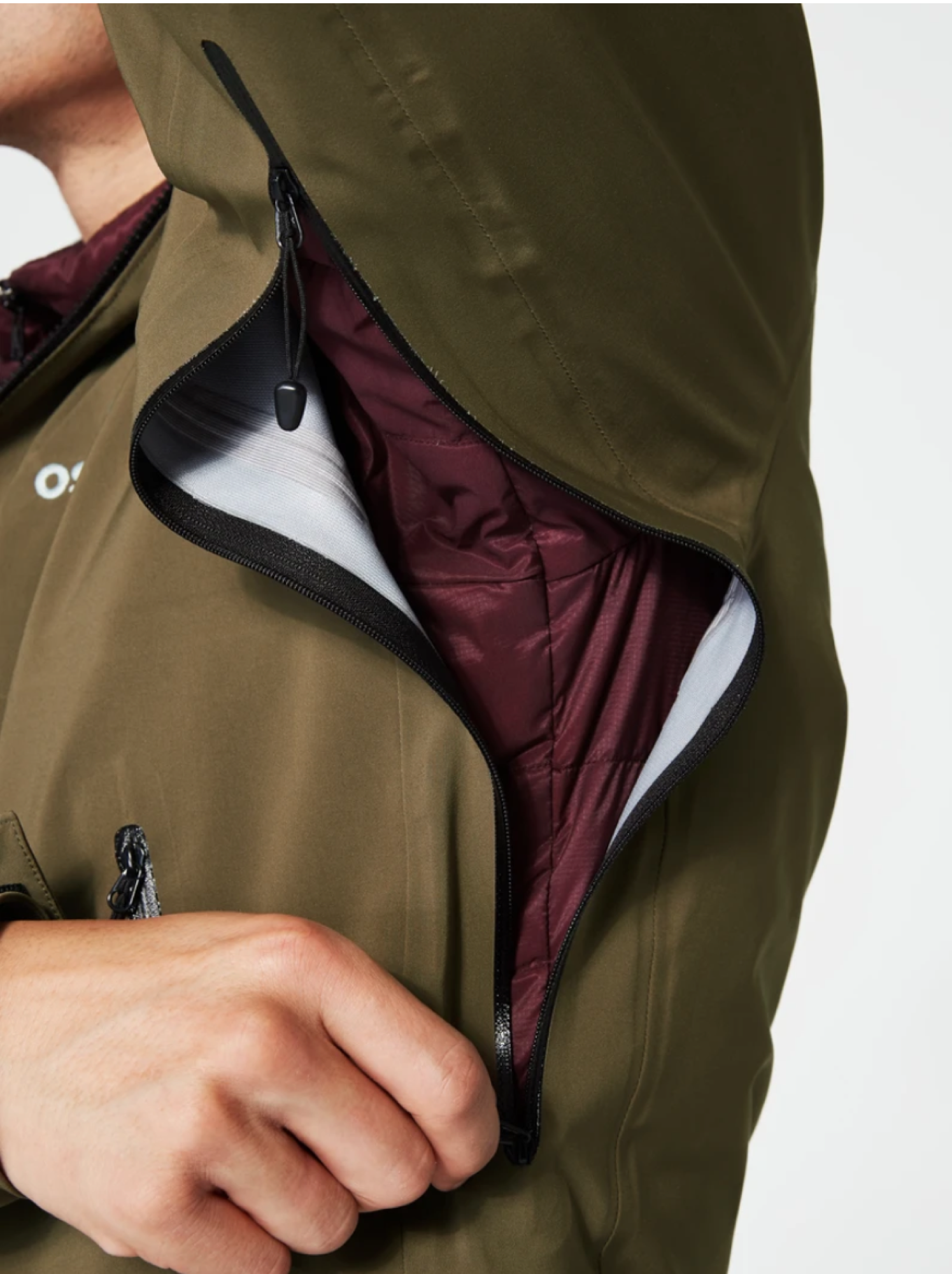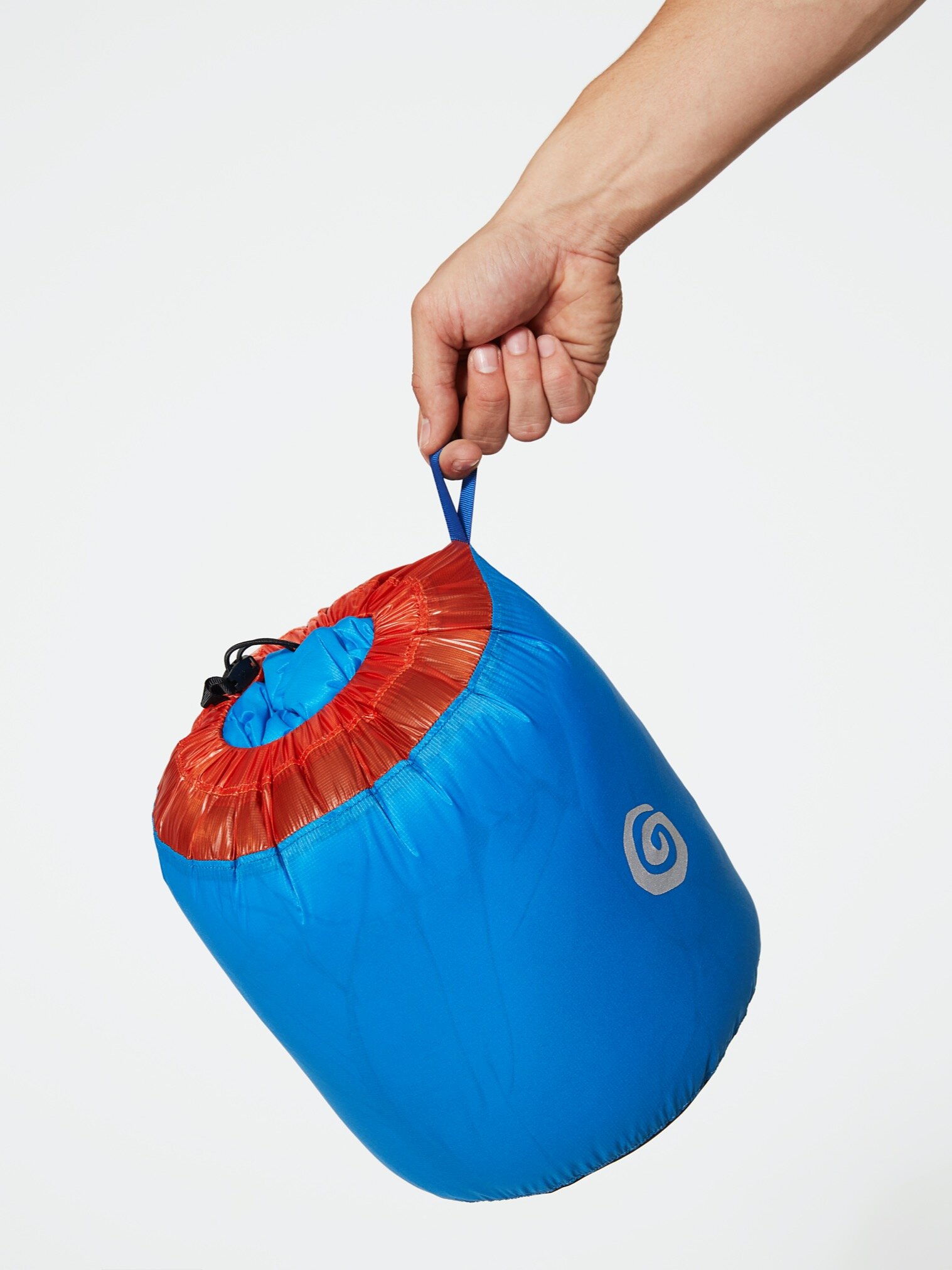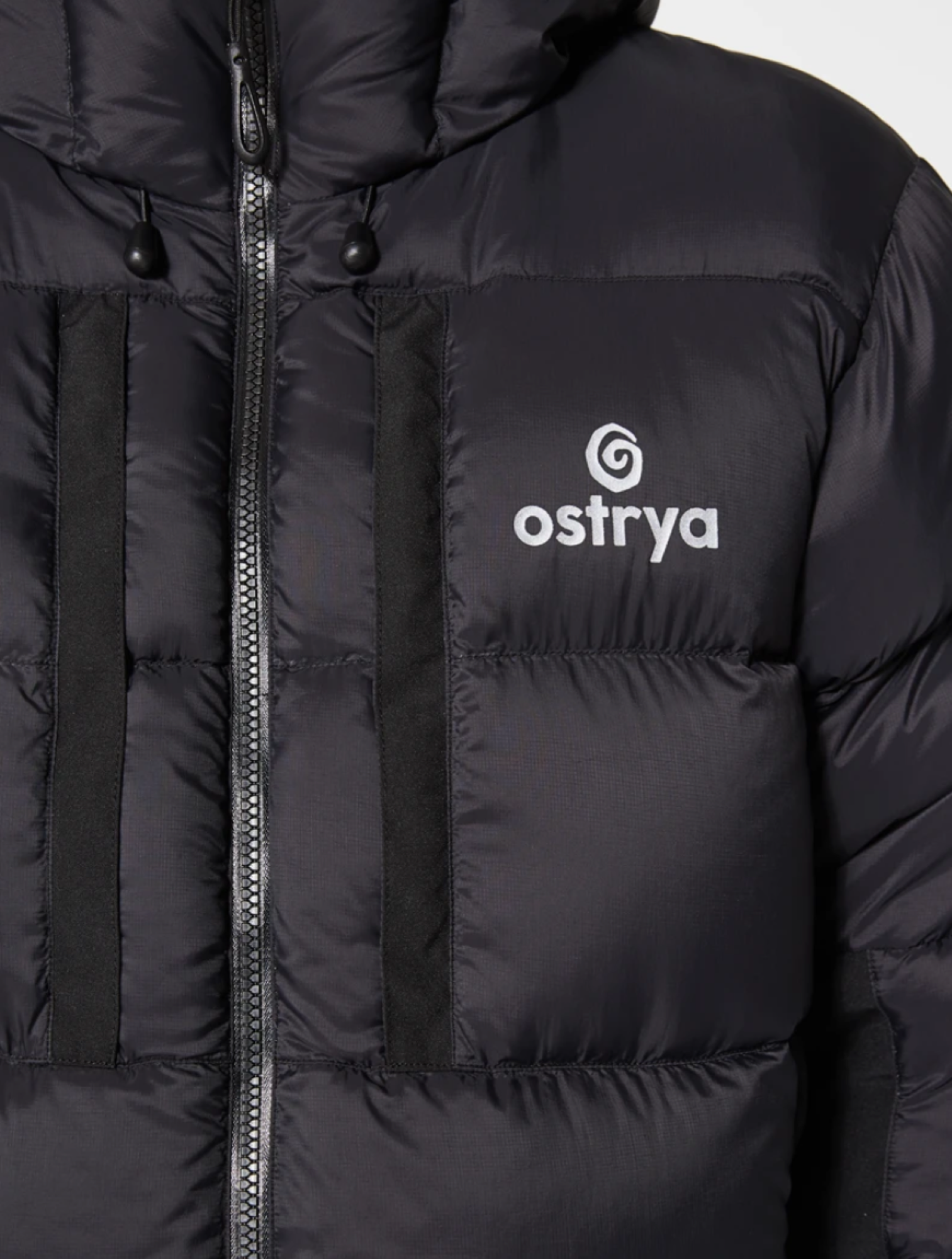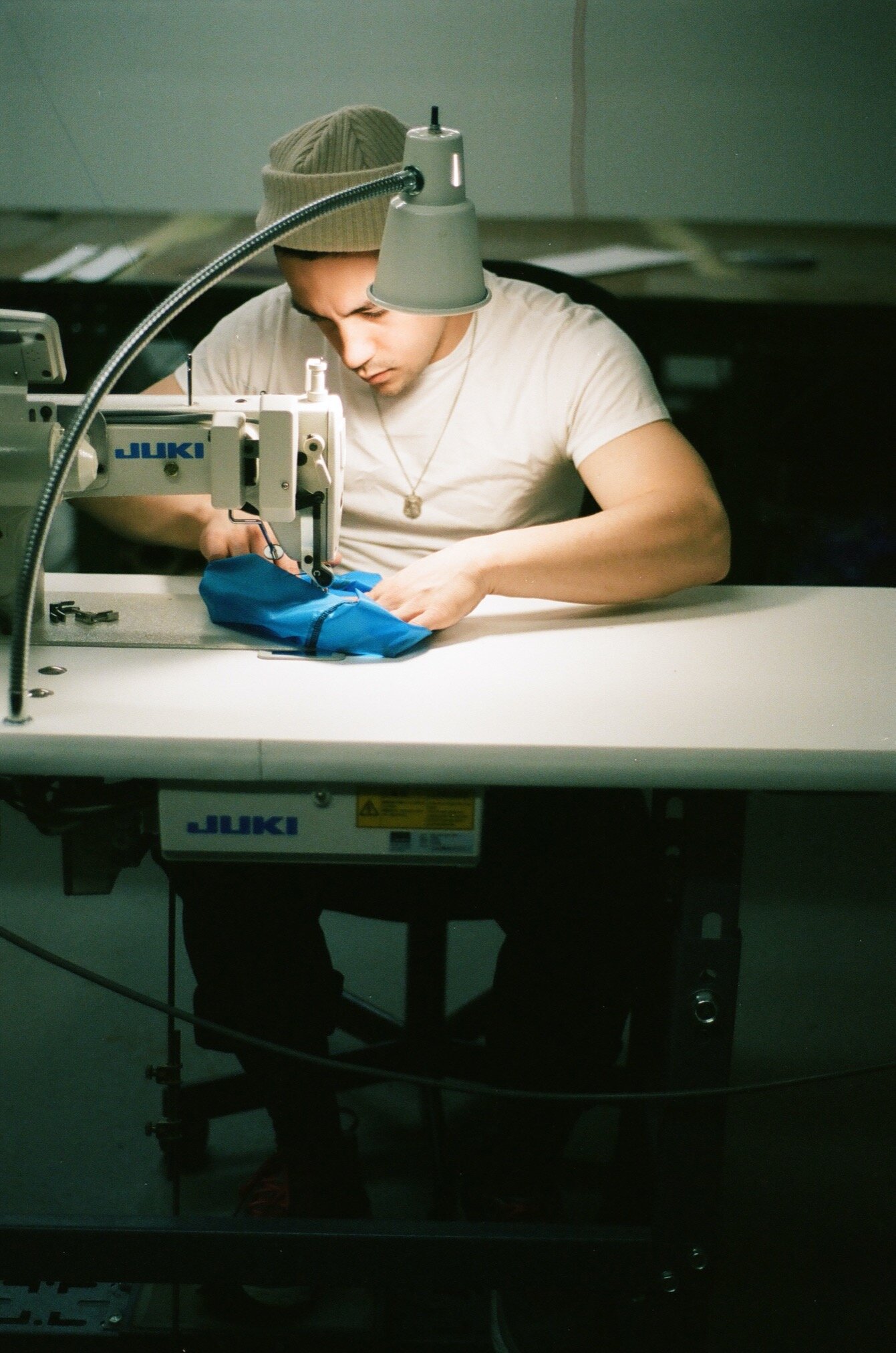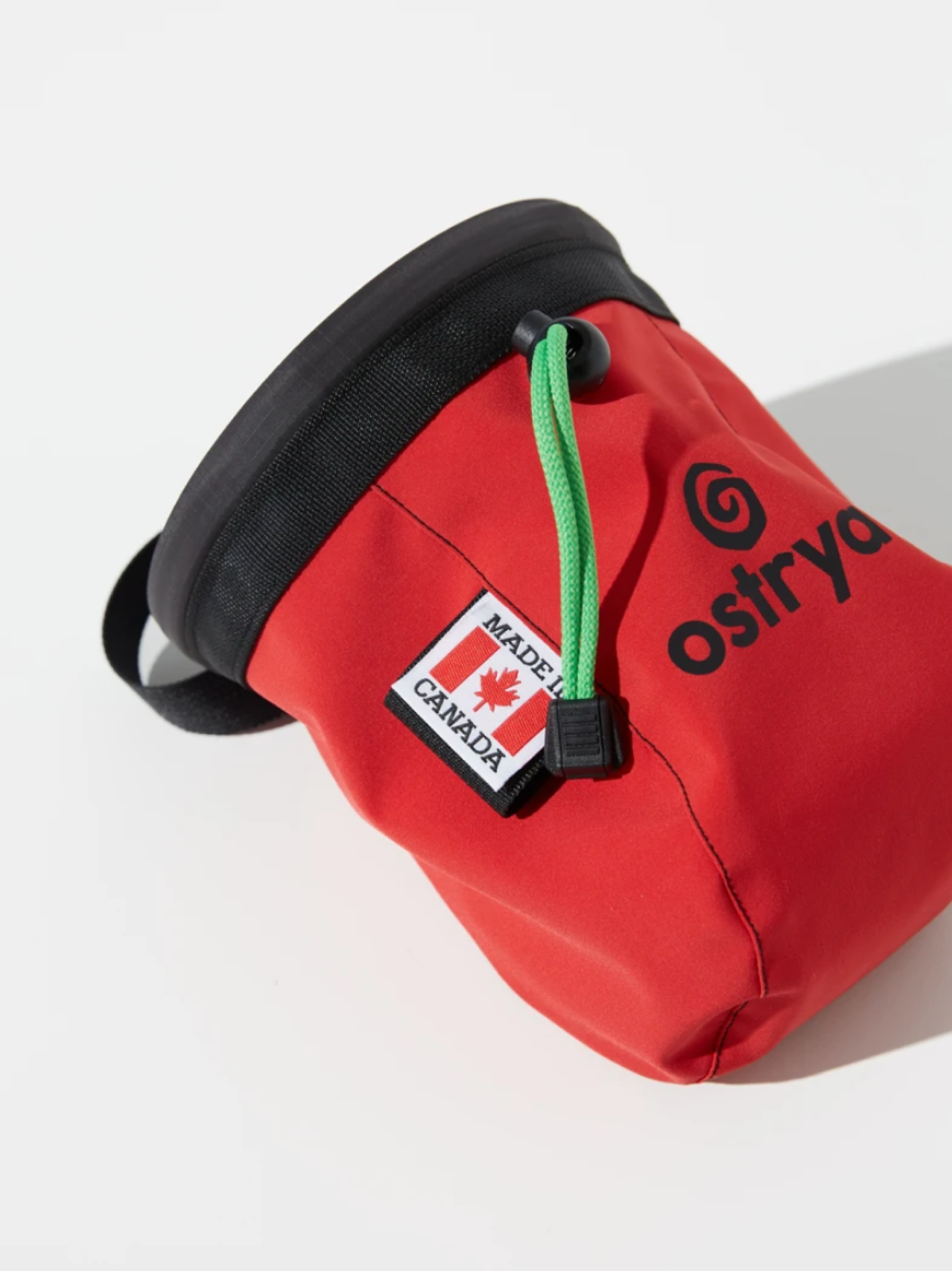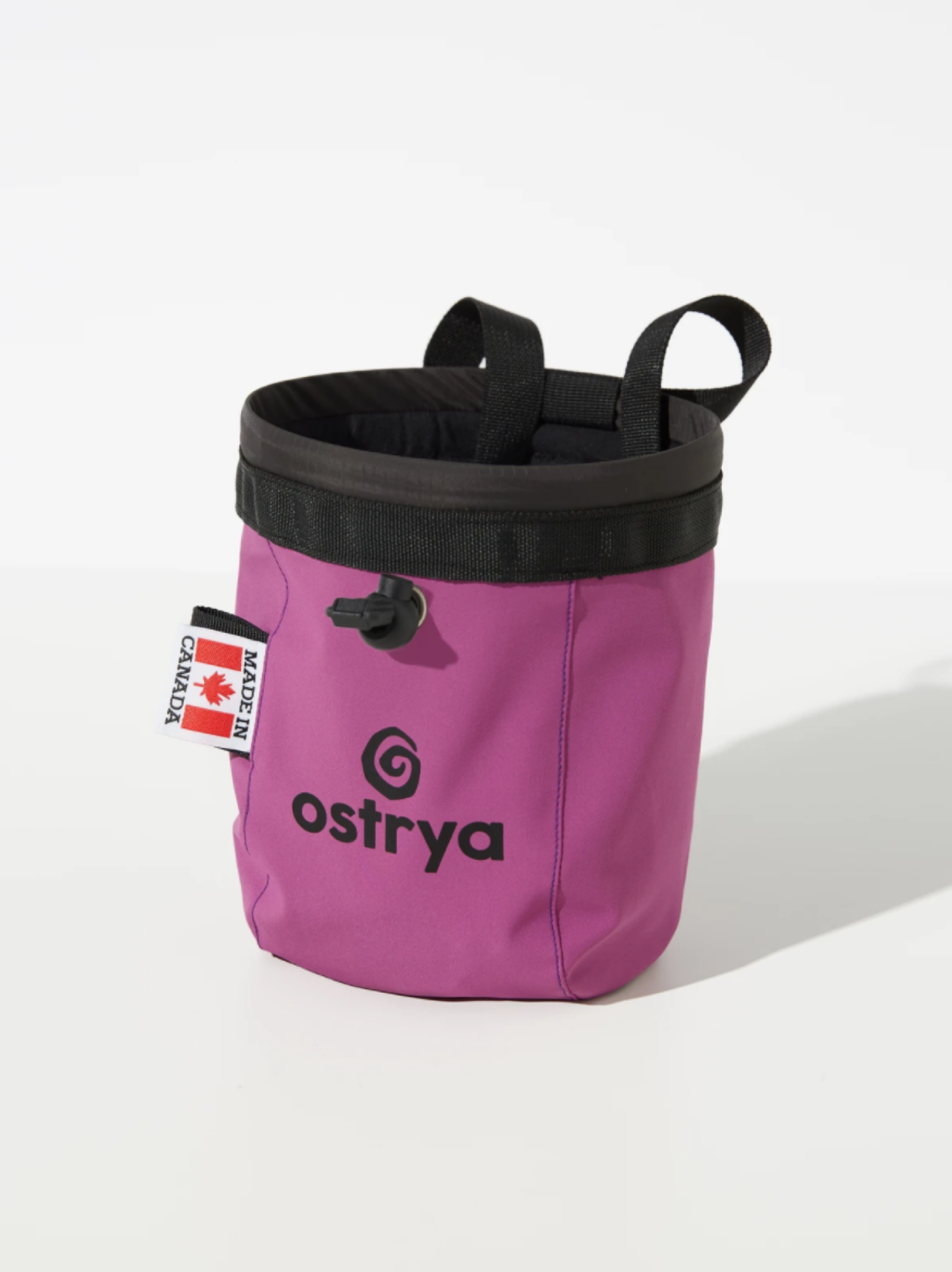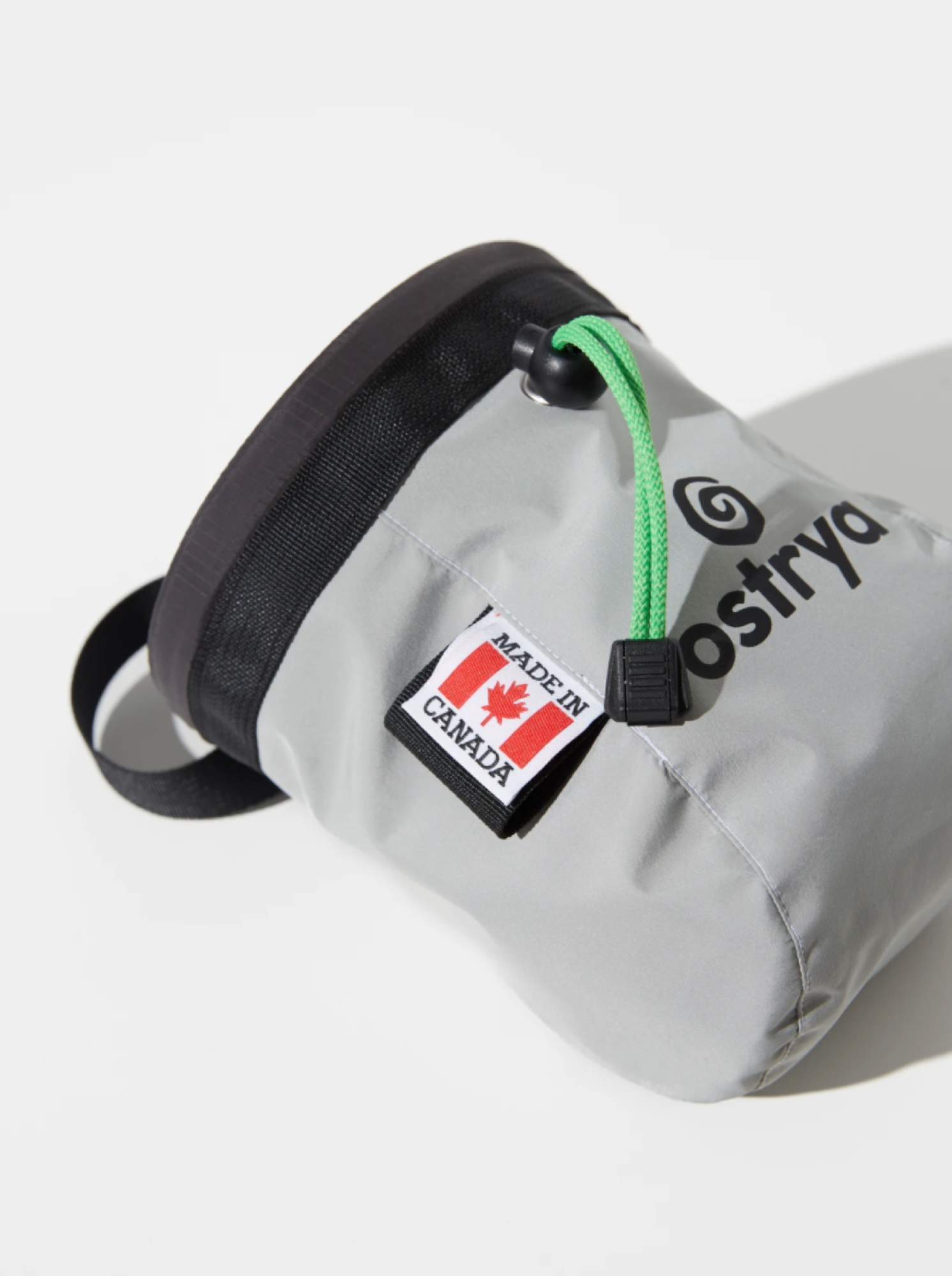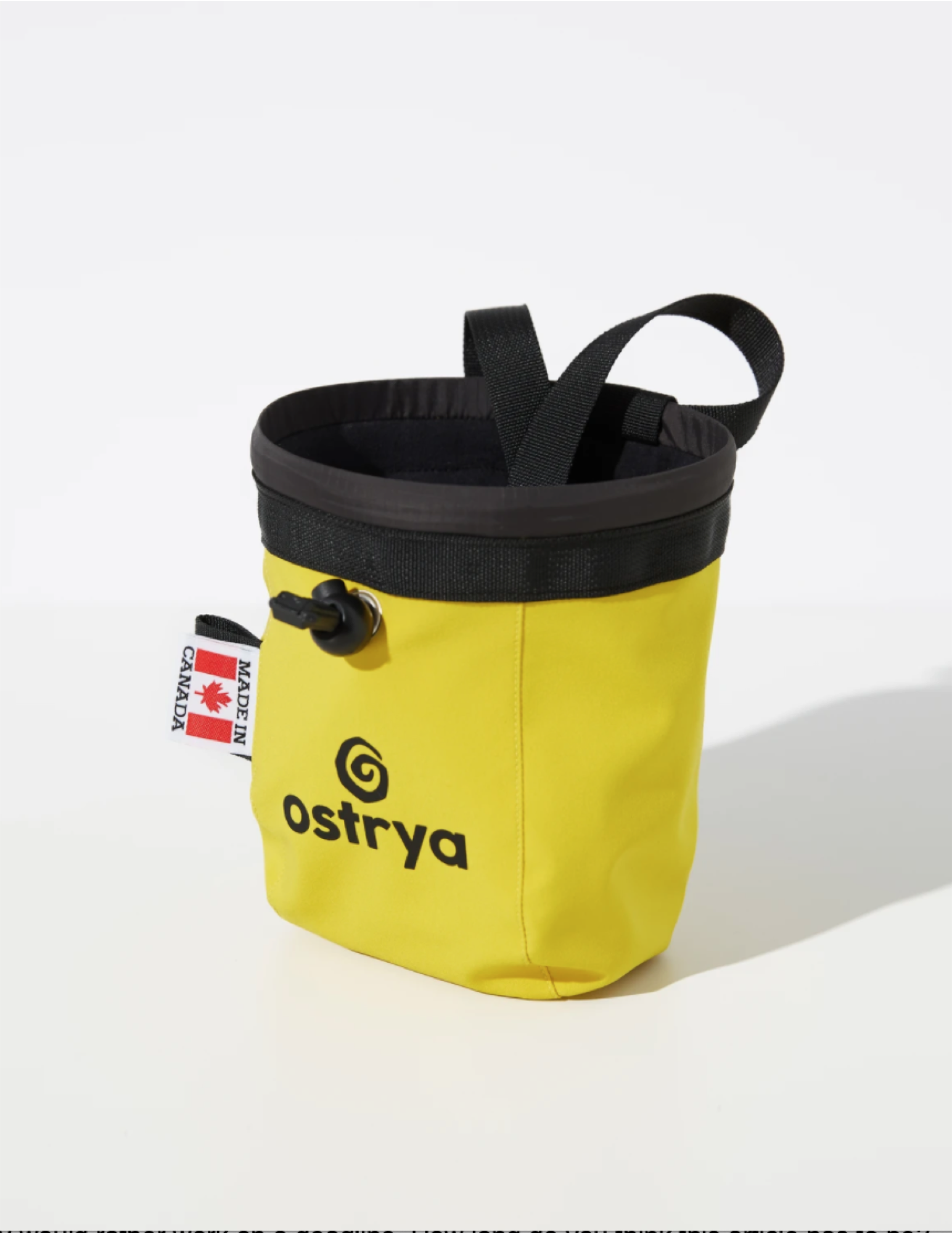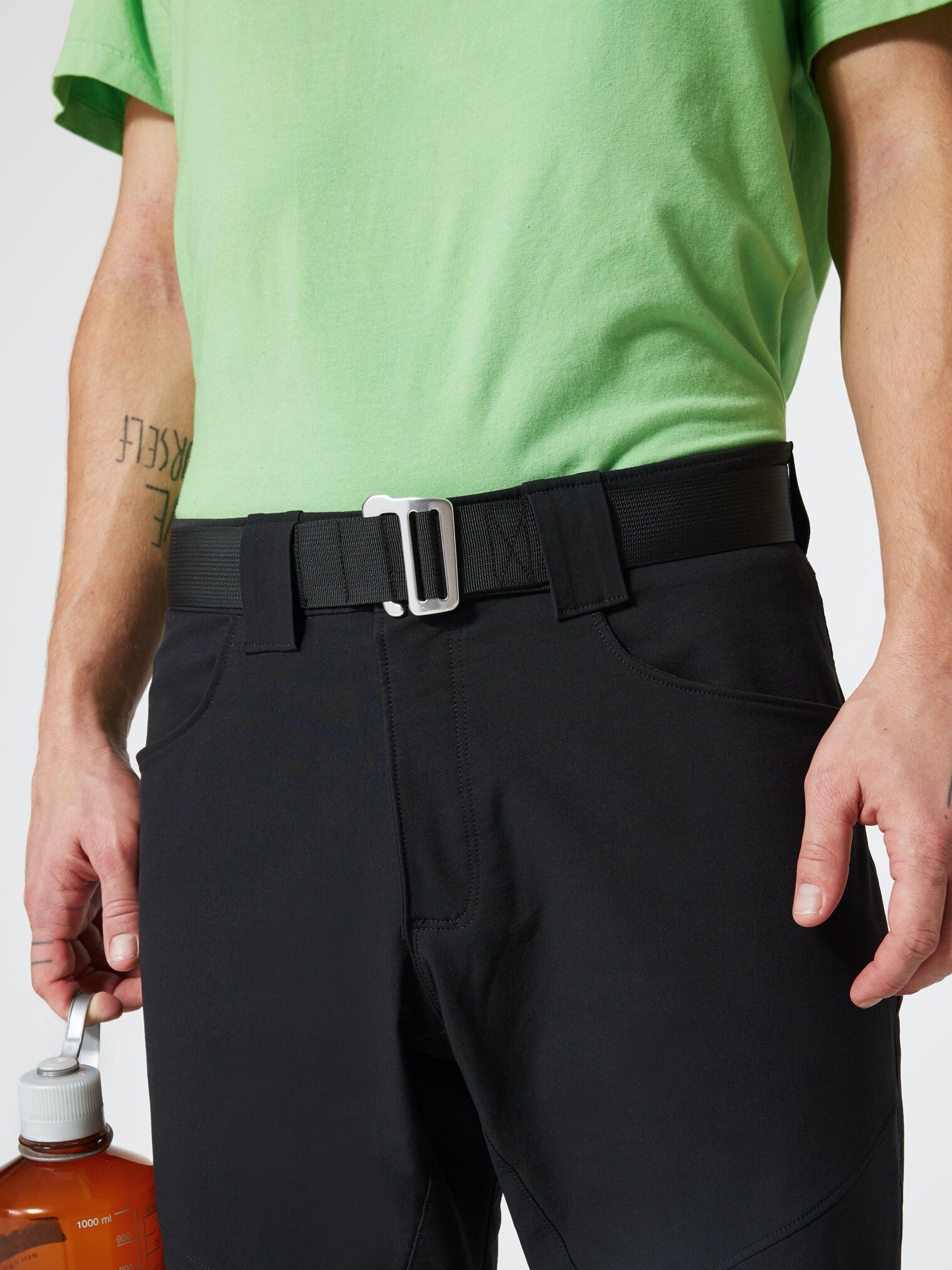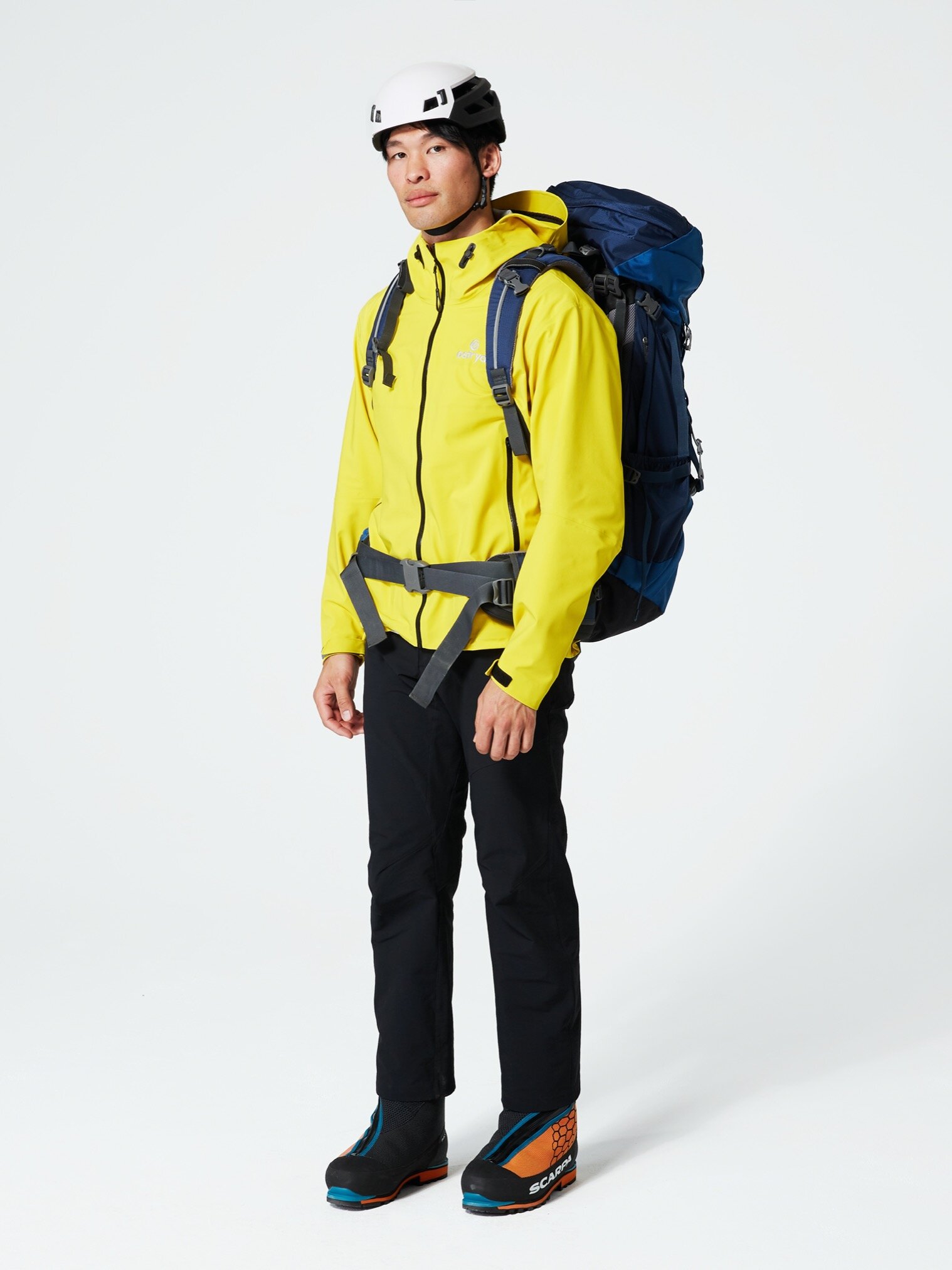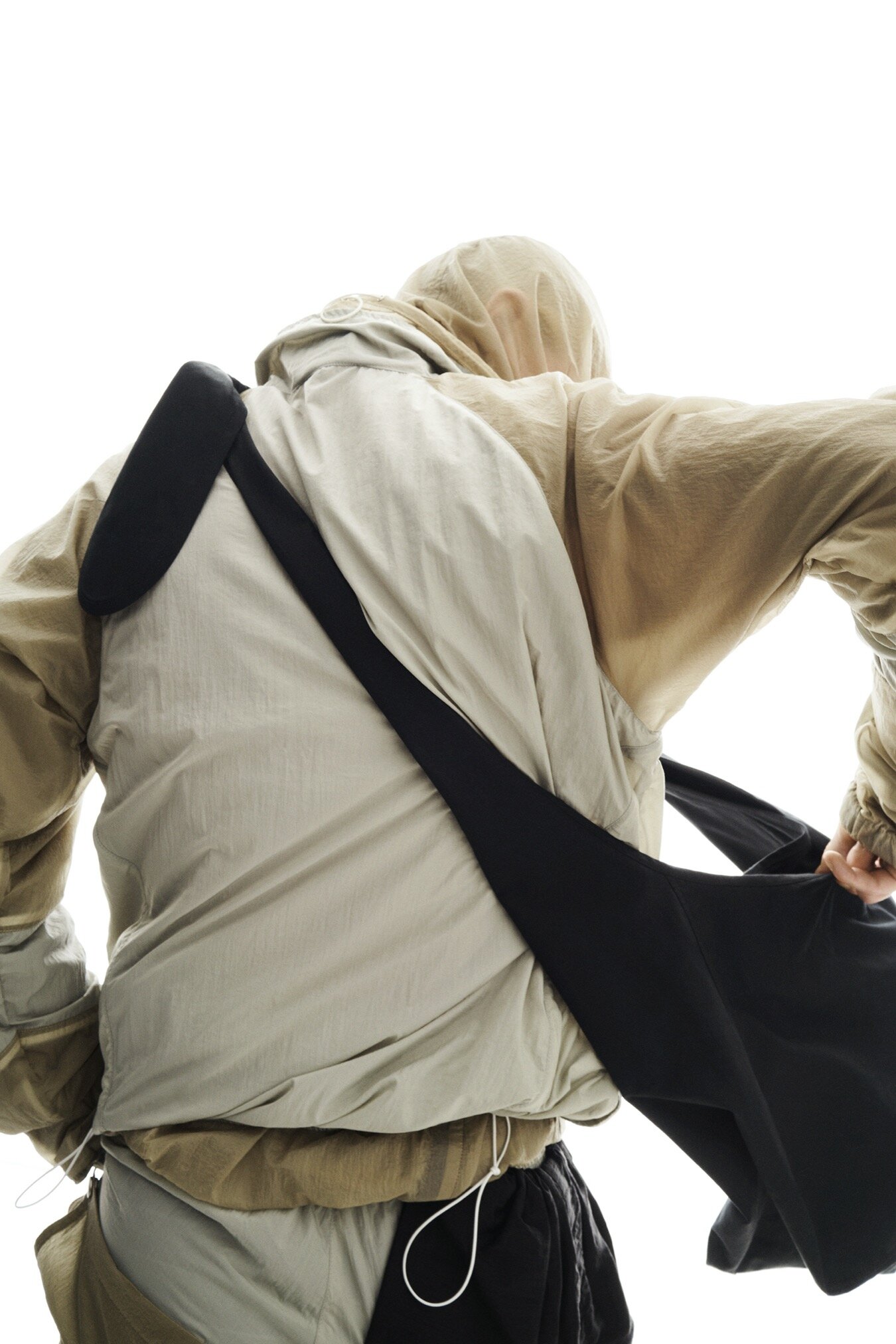Technical Cool: An Introduction to Ostrya Equipment

Hiking and outerwear clothing have had a major comeback in the last few years.
Not only from fashion and streetwear brands borrowing the aesthetics and the style of its more functional and active siblings but also by more and more people going out and using the garments for their actual purpose.
While fashion brands slide into the aesthetic of outdoor clothing, and try to find a luxury approach, quite a few outdoor brands have also established themselves whilst bridging functional clothing with modern design.
From and Wander, Salomon, to Merrel, there is a wide variety of brands forming a new aesthetic for nature and city hikers, products you can wear anywhere, in all conditions, but also look effortlessly fashionable at the same time.
Among the many brands coming up in the past few years, one that particularly excites us the most is Ostrya Equipment from Montréal, Canada. The outdoor brand that just started in FW19, has an aesthetic built around colourful yet simple designs which are outstanding. Again, it is their effortless approach that makes this brand an especially interesting pick.
While some fashion brands get stuck in trying too hard in picking up the outdoor trends or adjusting to its functional aesthetic, Ostrya is stirring up the story for the other side. As a truly technical and functional brand, their clothing is designed with purpose. Functionality, convenience, and usability come first, design follows seamlessly.
While fashion brands need to add pockets and gadgets to their designs to become functional, Ostrya Equipment is minimalizing their design and their pockets to just concentrate on the essential functional options.
The beauty of their designs comes through their process of having an organic and set-back pace. Clothes that are designed for functionality that happen to be fashionable rather than fashionable clothes that try to become functional.
The co-founders Simon-David Fortin and François-Xavier Tétreault established Ostrya after working in the field for a couple of years. Both grew up in & around the mountains of Canada, developing a fascination for outdoor sports and discovering the connection with nature from an early age on. This is also a reason for them to focus on ethically and environmental-friendly product. Using recycled fabrics, not outsourcing production, and being conscious of the societal role brands can play is crucial in this time and age.
Ostrya is sticking to ethical beliefs providing you with highly technical jackets and down suits for your next Himalayan expedition, hike, or simply a day in the city.
To find out more about Ostrya Equipment, their first steps, designs and their essential ways of doing the right things, we talked with both founders.
Dear Simon and François, could you please introduce Ostrya Equipment to the Sabukaru network?
Ostrya is a Montreal based company producing technical clothing and gear locally.
What are your roles in the brand besides being the co-founders, and where does your focus and passion for outdoor gear come from?
Simon is responsible for product design and production, trying to translate necessities behind the utility we want to give to our equipment. At the moment, our products are mostly designed for climbing, ice climbing and mountaineering. François takes care of the artistic direction and marketing of the brand. His goal is to express our values via our aesthetic, content and collaborators.
How did being raised in Canada affect your view on outdoor life and human connectivity with nature?
We are both kids who grew up in families in which playing outside was important. We are snowboarders and skiers at first and in Canada winters can get long, so you must take advantage of winter if you want to stay sane. In the summer, we like to go camping and hiking.
What did you see missing in the market to decide to establish Ostrya last year?
We met at University and studied fashion marketing and technical clothing design together. We both knew we wanted to start something together. After getting some experience in the outdoor business, Simon in production and Francois in marketing, we reunited to create a brand of technical clothing and gear made in Canada. With brands like Arc’Teryx getting bigger and relocating their production in Asia, we wanted to create a company making good stuff at home with limited impact on nature.
What are your key aesthetical and functional focuses when designing products that are suitable for the outdoors but also for city life?
Our designs are first oriented for technical purposes. We make clothing for mountaineering and ice climbing and these activities require specific elements like accessible pockets, wind-proof seams and such. We think that beauty has a lot to do with function so we try to eliminate unnecessary elements on our products and believe that if a jacket is meant to keep you safe on the highest peaks it should work fine in the city. Our colourful aesthetic comes from our desire to express inclusivity and the pleasure bound to outdoor sports.
We are impressed by the 'low-key' design aspect of your brand. The brand doesn't scream too loud but seems to have an organic approach to be fashionable within the outside world. How would you explain your aesthetical approach when it comes to your designs?
We love the outdoors and technical gear but also have great respect for fashion designers and the artistic vision that can be expressed in clothing. We try to combine these two elements and produce technical clothing that is aesthetically appealing and work with collaborators that share the same vision.
DENALI PARKA
Can you please tell us more about the ideas and values behind the brand?
Our first goal is to produce our gear locally and express our Canadian winter expertise. We also wish to do so while limiting our impact on nature and encouraging individuals that share our vision. Finally, we want to make outdoor sports more appealing and accessible to anyone who wants to live a more active life.
Both: @ Lionel Pierron
In your about page you mention the importance of a brand’s social role, and a responsibility towards our planet. We love that. Can you please tell us more about this way of thinking as well as moving through time and space as a brand?
We wish to do our part as individuals to limit our impact on our planet and we believe that making something locally that is durable is a good way to do so. Of course, not buying any clothes is the best you can do, but outdoor activities necessitate specific equipment, so we wish to create some that has low impact and is easily repairable. Using surplus fabric is also our way to upcycle materials and avoiding them to end in landfills. We try to express our social values with the ambassadors and athletes that work with us. We are currently working on a blog where we will tell stories about people that inspire us and that take action to push active lifestyles and fight climate change.
What does innovation mean translated in an Ostrya sense? Where do you see the outdoor world lacks it?
We believe that there is always room for improvement in the technical clothing business. While we do not have the means of the big brands of this industry to push technological improvements, we use this to our advantage and opt for upcycling and local production. We think big brands have a lot to learn from small businesses putting efforts to limit their impact on nature.
Both: @Alex Blouin
We saw a massive demand for eco-consciousness last year, and especially in outdoor clothing, most big players have sustainability plans already. Do you see the industry changing in any way?
Outdoor industry customers are necessarily nature lovers and are turning to brands that put efforts to limit their impact on nature. Some companies, like Patagonia are proposing smart and durable alternative like Worn Wear, where they repair and resell used clothing, but some brands need to completely rethink the way they source their materials and produce their goods. We are observing a shift in mentalities, but it will not be easy for most brands do adapt.
Both @ Lionel Pierron
What are your direct measurements to act responsibly and sustainably?
We try produce the least possible materials to make our clothing. Most of the fabric we use is industry surplus, we buy excess fabric from brands that produce too much of it and give utility and value to materials that would otherwise go to waste. Our design process is inverted in the way that we find quality fabrics and make product from there. The size of our team makes it easy for us to adapt to what is available. For example, we had a hard time finding black 3-ply fabric. Even though the demand for black 3-ply shells was high, we refused to produce new fabric and waited until we found remnants to use. If we produce fabric, we make sure it is either locally made or using organic fibres such as the organic cotton in our t-shirts. By making everything locally we also limit our carbon footprint linked to transport which can be enormous in larger brands producing in different countries.
Looking into your design and brand vision - what would you call a classic Ostrya product or what would you like to be remembered for once the brand can look down at a long legacy?
We are and wish to stay a brand of technical clothing made in Canada.
Can you tell us more about the origin of your spiral graphic logo? We love it
Thank you. The Ostrya Virginiana is a Canadian native tree that is known to be almost impossible to cut. Its wood is used to craft highly durable tool handles. We wanted to express our Canadian roots and the durability of our products with a name referring to our love for nature. Our icon refers to the growth rings of an Ostrya tree and the never-ending learning process behind our brand. It also is a nod to the upcycling process behind a lot of our products. Finally, it is a like a human fingerprint that we are leaving on our equipment showing our savoir-faire.
ORGANIC CORE LOGO TEE
Since you are a reasonably young brand, we can have a pretty focused and detailed look at your products so far. Can you please take us by hand and talk us through some of your products? What were the thoughts behind each design, the functionality and the fabrics and techniques used?Our favourites are:
The Ultra Hook Belt
“The Ultralight Hook Belt is a light polyester belt that can be used on and off the mountain. The aviation grade aluminum hook is practical and resistant making it a highly durable accessory.”
The Chalk Bags
“We wanted to find a new way to use remnant 3-ply fabric, so we decided to make chalk bags. The result is a resistant and light bag that can be used in any environment.”
The Cambium hard shell
“We are very happy with the design of the Cambium Shell. Using remnant 3-ply polyester, it is our most versatile product and can be used for skiing, ice climbing and in the city in wet conditions. It can be paired with a light down jacket on colder days and has just the right amount of adjustments and features to make it your best adventure partner.”
The Denali Parker
“The Denali Parka is our first parka design. We wanted to make a mountaineering parka to be used on high peaks and cold conditions. The double baffle construction makes it totally windproof while remaining light and highly packable. It is harness-friendly, and the hood is helmet compatible. It is made using remnant and locally made fabric.”
The "Made in Canada" tag is something we did not come across too many times. What do you want people to affiliate with when seeing this tag? What message should "Made in Canada" convey through Ostrya products?
Winter is a big part of our lives in Canada and when it comes to cold outdoor activities, we know what we are talking about. This tag is our way to say that as people living and thriving in cold conditions many months per year, we are using our experience to make high quality equipment. It is also a proof of the ethical production practices behind our products.
You recently announced that you teamed up with Denali, a documentation and adventure film company from Canada. Can you tell us a little about that project?
Our friends at Denali Films wish to create documentaries about exploration and nature featuring people that are out of the box and are giving and big place to women in outdoor sports. This way of doing business is directly in sync with what we are doing at Ostrya so they came to us to equip their production team. We would be glad to work with them for their next documentary.
Looking into the future, what are your plans for Ostrya this year? What can we expect to see?
We are currently working on summer clothing we would like to produce. We want to make nice graphic tees and bouldering equipment.
What product might be next for you guys? We somehow see and want you guys to create pair of pants! What can we expect?
We are currently designing a down suit for 8000 meters of mountain exploration. Pants are coming as well.
Thank you a lot for your time!
Text by: Adrian Bianco, Juri Marian Gross, Hussain Razvi
Studio Photos: Lionel Pierron


